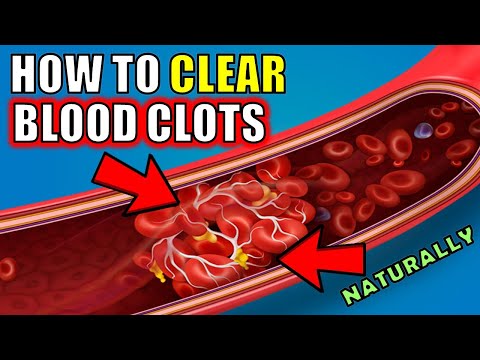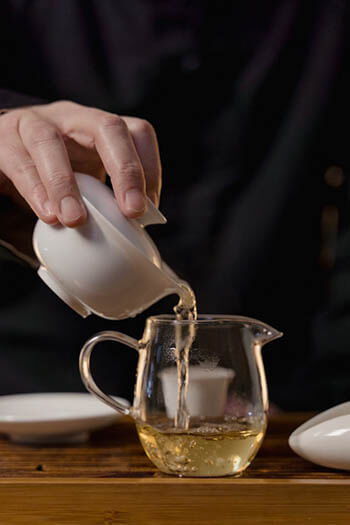Blood clots are shockingly common issues that can become very serious. Blood clots can be caused by health issues, genetics, medications, or lifestyle choices.
While you're never guaranteed to get - or avoid - a blood clot, there are certain things you can do to make yourself less likely to get a blood clot. On the other hand, certain lifestyle choices and medications can make you more likely to experience a blood clot.
It's important to find the balance between natural, at-home treatments for blood clots and getting proper medical attention. Blood clots can be extremely serious or even fatal, so you shouldn't rely solely on natural treatments.
However, there are things you can do to help clear existing blood clots, and prevent blood clots from forming. Let's discuss what blood clots are, how they form, and what you can do about it.
What Are Blood Clots?
Blood clots are exactly what they sound like. They're clots, or coagulations, of blood, and form when blood vessels cluster together in veins and arteries. These clots can block blood flow, causing trouble with circulation.
Depending on where the blood clot forms, it can cause serious medical issues. For instance, a pulmonary embolism in the lungs can be fatal. If you suspect you might have a blood clot, you need to seek medical advice immediately.
What Causes Blood Clots?
Blood clots - also known as Deep Vein Thrombosis, or DVT - can form in people who aren't very active or don't move around a lot. For example, full-time drivers may be at the risk of getting a blood clot.
People who've recently had surgeries might be at greater risk of blood clots. While genetics can play a part in blood clots (if a close relative is prone to blood clots, you might be too), lifestyle also has a part to play in your circulatory health.
Signs Of a Blood Clot - And What To Do About It
You may be at greater blood clot risk if you've just had surgery, or if you have a sedentary lifestyle. If you have a health condition that prevents you from moving around very much, you might want to watch out for blood clots.
Here are a few symptoms that could indicate that you're suffering from a blood clot:
- Swelling in the arms and legs
- Redness or discoloration on your extremities
- Shortness of breath
- Warm spots in certain areas, particularly on your extremities
- Pain or discomfort (this can be localized, or can pop up in other areas, but is usually connected to the clotting)
Some blood clot symptoms can be somewhat vague and general. For example, redness, discoloration, or swelling can be caused by lots of different conditions, and may not necessarily be due to a blood clot.
However, if you think you might be suffering from a blood clot, seek medical attention immediately. Now is not the time to turn to natural remedies.
At-home treatments can certainly help to clear a blood clot and prevent more clots from forming, but you do need medical treatment first. This is because blood clots can quickly become fatal, and a doctor needs to assess your situation. You may also need blood thinners or even surgery.
Natural Remedies and Treatments For Blood Clots
If you're trying to clear a blood clot at home, or just want to lower your risk of developing a blood clot, there are treatments and lifestyle changes you can try, right there at home.
Eating The Right Foods
Our health is directly affected by the foods we eat - or don't eat. We know that certain foods are healthier than others, and there are some foods that can improve blood flow and circulation, therefore reducing the chances of blood clots.
Turmeric
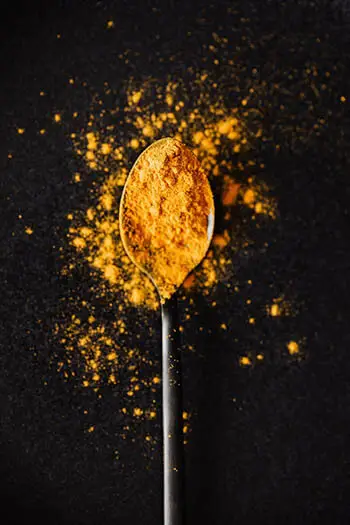
A key ingredient in turmeric is curcumin, which gives the spice its "spicy" kick. The curcumin in turmeric helps to boost platelet health, which keeps blood vessels healthy and moving smoothly - therefore less likely to clot together.
Turmeric also has anti-inflammatory properties, which can help to ease the pain and discomfort that blood clots can cause.
Garlic
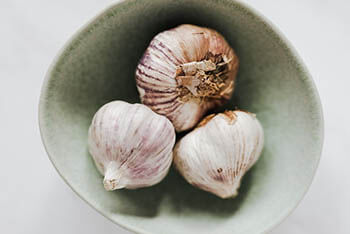
Most of us love a bit of garlic. You'll love it even more once you learn that garlic is a vasodilator, which greatly improves circulation. The sulfur compounds found in garlic also work to break down blood clots.
For best results, you should consume at least one clove of garlic a day. Like turmeric, garlic is a delicious and versatile ingredient, and you should have no problems adding it to your daily diet.
Beetroot
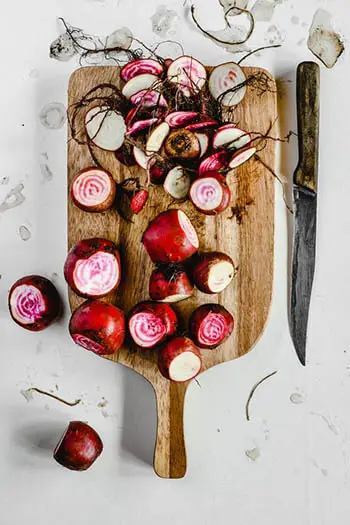
Beetroot is an ingredient that turns up in more and more healthy foods and drinks. This is because beetroot is high in nitrates, which are then turned into nitric oxide by the body. Nitric oxide, like garlic, works as a vasodilator.
Vasodilation doesn't just speed up blood circulation and relax the blood vessels; it also helps oxygenate the blood more effectively.
Proper Hydration
Staying hydrated is absolutely essential for all aspects of health. Dehydration can increase your risk of a blood clot, due to the blood thickening and coagulating more. On average, you should be drinking around eight glasses of water a day, which can greatly reduce your chances of getting a blood clot.
Red Wine
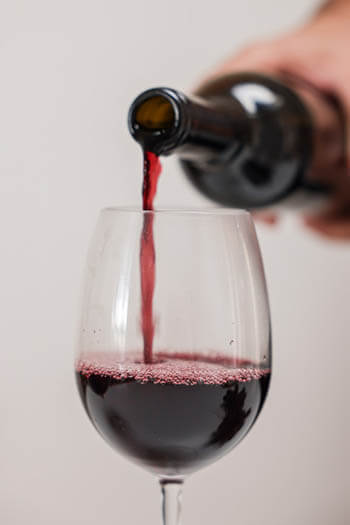
A little bit of red wine goes a long way. While drinking too much alcohol is obviously bad for your health, an occasional glass of red wine can be surprisingly healthy.
Red wine contains powerful antioxidants and can prevent blood platelets from sticking to each other and ultimately clotting. While too much alcohol can be bad for your health, it's perfectly fine in moderation.
Olive Oils
Olive oil is often classed as a "healthy fat". It contains the same polyphenols (antioxidants) as red wine, and so can help to prevent blood clots from forming. Virgin or extra virgin olive oil is best.
Aspirin
Aspirin is not exactly a food to eat or avoid, but it is a powerful medication you can take at home to help prevent blood clots. This is because aspirin works as a blood thinner, which can prevent blood platelets from thickening and sticking to each other.
If you're already taking other medications, or you have any concerns, talk to your doctor before taking aspirin on a daily basis.
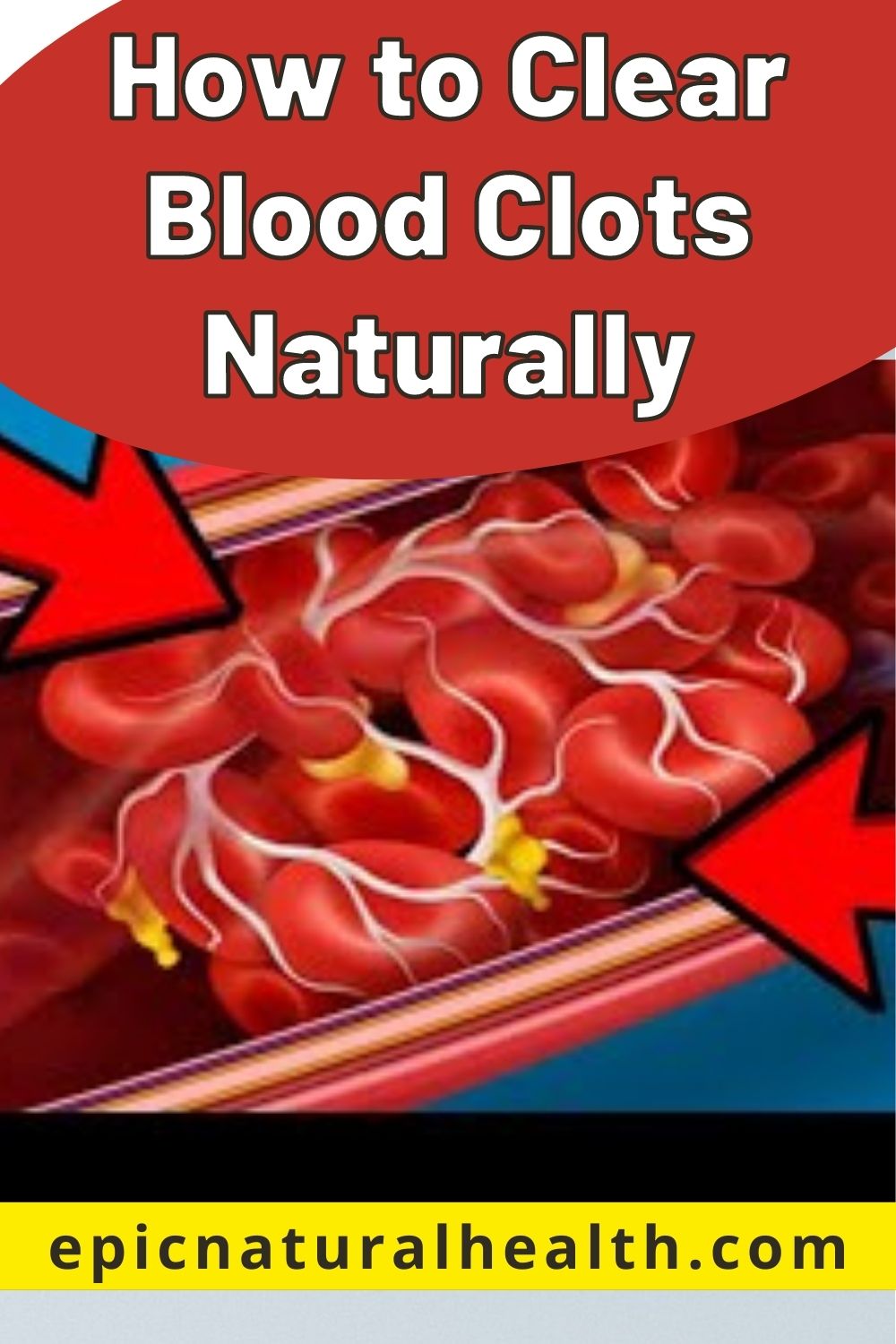
Stay Active
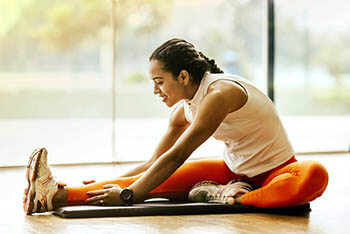
Spending all day sitting down puts a person at high risk for blood clots, such as deep vein thrombosis, or, more dangerously, a pulmonary embolism. For those of us with office jobs, this can be tricky - we might spend all day sitting down. However, sitting all day is the perfect recipe for poor circulation and sluggish blood flow. To get your blood moving, you need to get yourself moving.
Exercise is essential. You don't need to join a gym or start jogging for miles every day. If you've led a fairly sedentary life until now, start with gentle exercise. A few minutes of walking a day can help ease you into the habit of exercising, and you can gradually increase the pace of the walking and the distance that you travel.
The key is to get your heart moving. The faster your heart pumps, the more blood flow you're getting around your body. With regular, vigorous blood flow, a person is at a far lower risk for blood clots.
Wear The Right Clothes
If your legs or arms are prone to swelling, a doctor might recommend compression stockings or some other sort of compression garment. Compression stockings can help to deal with swelling and manage blood flow in your extremities.
However, you do need to find the right balance here. In most cases, wearing tight-fitting clothing will put you at greater risk of developing deep vein thrombosis, not less. Wearing compression clothing during and directly after exercise is fine, but for the rest of your time, it's better to wear loose-fitting clothes. Tight clothes may look good, but they're putting you at a greater risk of deep vein thrombosis, or blood clots.
Skinny jeans and tight tops are fashionable at the moment, but they can actually cause poor circulation - which can lead to blood clots!
Regular Breaks From Sitting
People who spend most of their day sitting down (whether due to work, habit, or health reasons) are at a much greater risk of developing deep vein thrombosis. Sitting for too long allows our heart rate to slow, meaning that blood moves more sluggishly through our bodies. This can lead to poor circulation, especially in the limbs.
If you can, take regular breaks from sitting down. When you take a break, use it as an opportunity to get up, stretch, and walk around. Long-distance drivers or office workers often have this problem, and it's crucial to make time to move around.
Humans aren't designed to stay in one position for too long. Short but frequent breaks are ideal, and can also help your posture. If you can't get up from your chair right now, try and stretch when you can, or perform sitting down exercises. Stretching can help get blood flow back into your muscles, and even doing small exercises at your desk can help improve blood circulation.
However, stretching and sit-down exercises can't - and shouldn't - replace physically getting up and moving around.
Medical Advice - Finding The Right Balance
Last but certainly not least, you need to find the right balance between at-home treatments and medical care. A blood clot is not a case of flu for you to try and treat at home - a pulmonary embolism can be fatal. If you suspect you have a blood clot, it's best to get it checked out by a doctor first of all.
Most of these at-home treatments can be used alongside prescribed medication and treatments. In fact, most doctors suggest taking an aspirin a day to help reduce the chance of blood clotting.
Remember, making healthy lifestyle changes is always the right thing to do. Eating badly, not exercising, smoking, and excessive drinking can all seriously increase your risk of getting a blood clot. Making changes in your lifestyle now can make all the difference.
When To See A Doctor
If you experience any symptoms of a blood clot (swelling, redness, discoloration, pain, or warm spots), you should see a doctor, especially if you've had blood clots before. If you've recently had surgery, you might also be at higher risk of a blood clot.
If you do have a blood clot, you might need surgery or other treatment. However, your doctor may suggest that you keep trying to treat the clot at home. If you feel that your symptoms are not getting better, or are getting worse, go back to speak to the doctor.
The Bottom Line
Most of us don't enjoy seeing the doctor. While it's nice to be able to treat minor health conditions at home, remember that blood clots can be very nasty, and may even be fatal. Some people have even lost limbs to untreated blood clots.
The best way to reduce your risk of getting a blood clot is to eat well, live a healthy lifestyle, stay hydrated, and stay active.
Unfortunately, living a healthy life isn't a guarantee that you won't get a blood clot. If you're an "at-risk" person, stay extra vigilant for the signs of blood clotting. Unhealthy habits like smoking or excessive alcohol drinking can also make you more likely to develop a blood clot, as can a history of blood clotting.
Some medications can thicken your blood and may even list deep vein thrombosis as a side-effect. While this is unpleasant, you should never stop taking any medication without consulting with your doctor first. It's also good to talk to your doctor before making any serious lifestyle decisions, like changing your diet or starting a vigorous exercise program.

